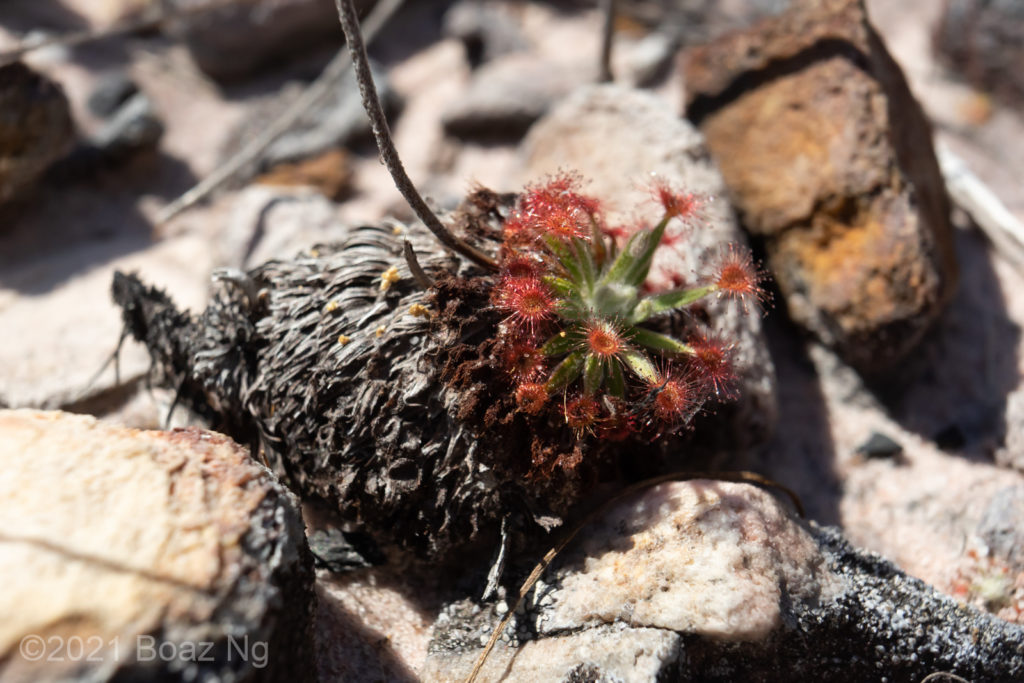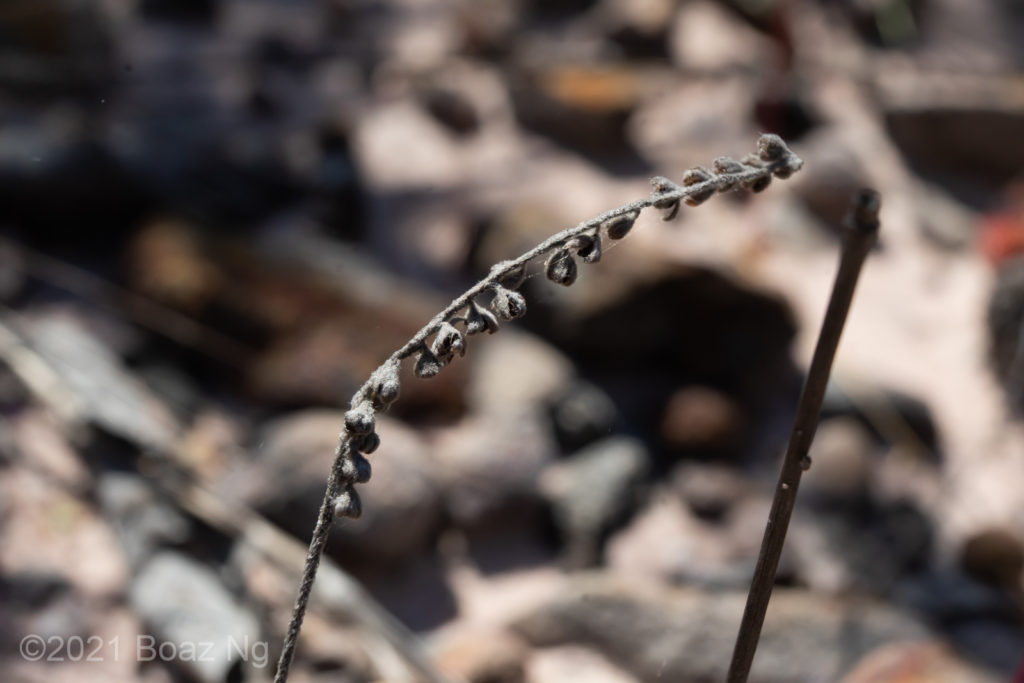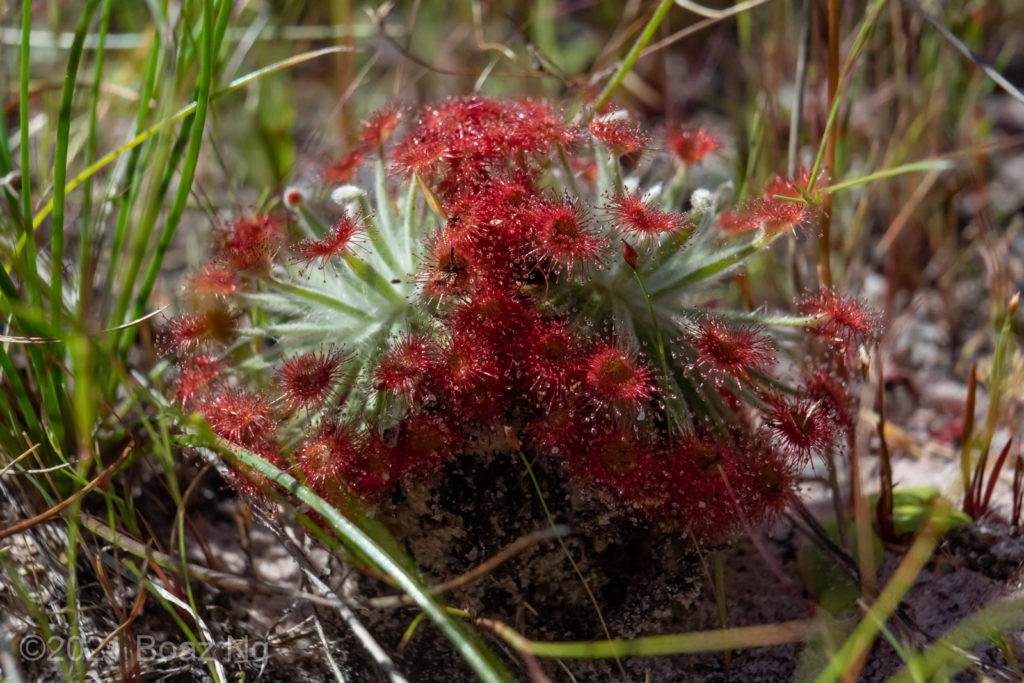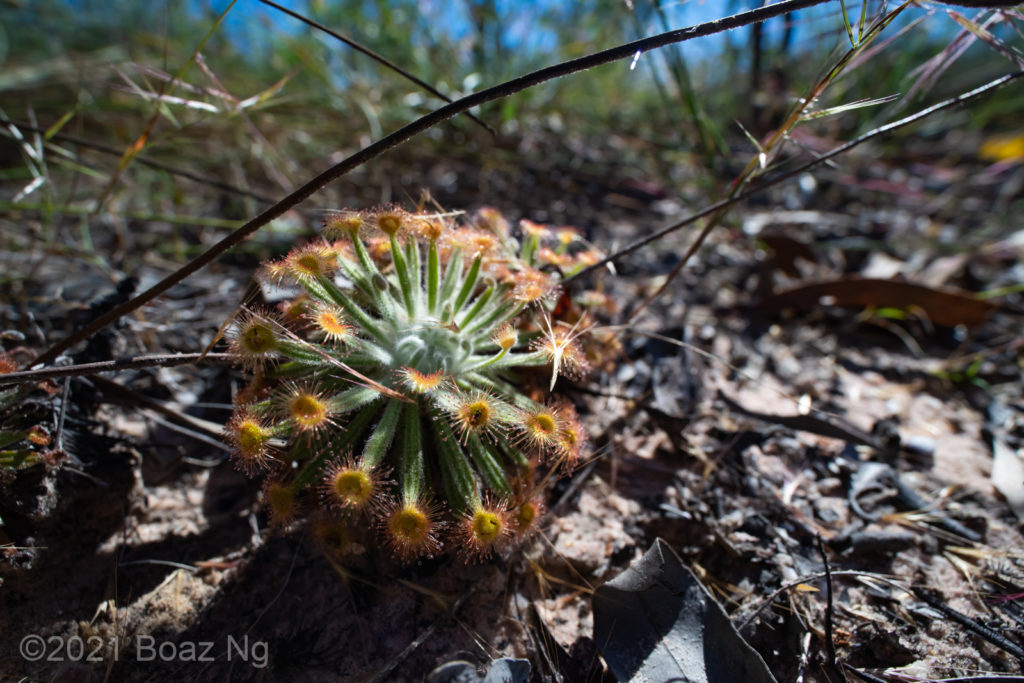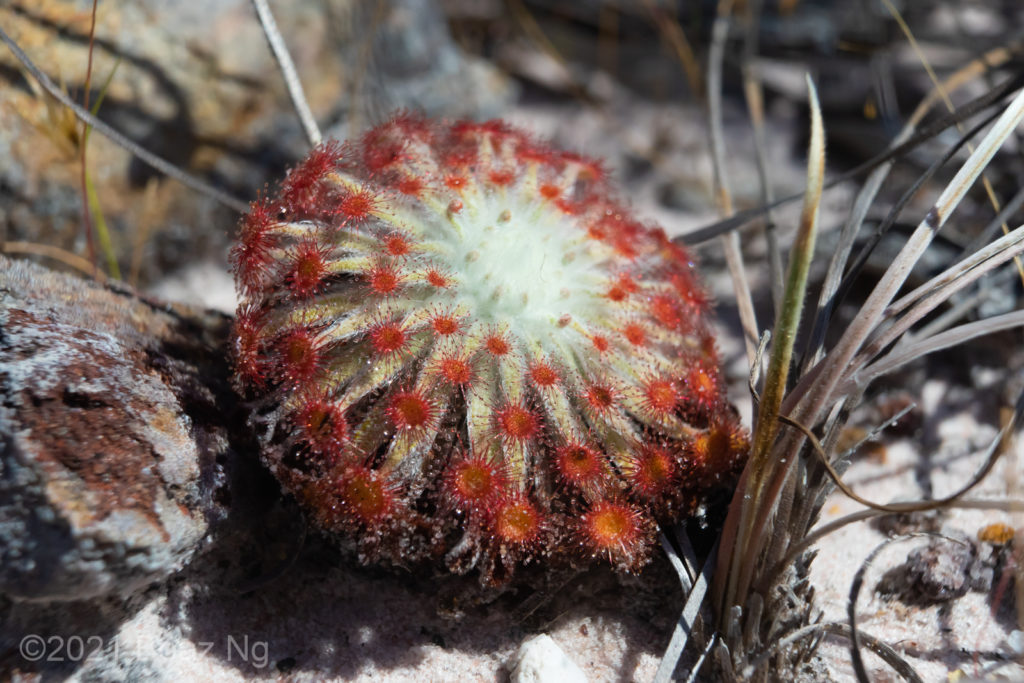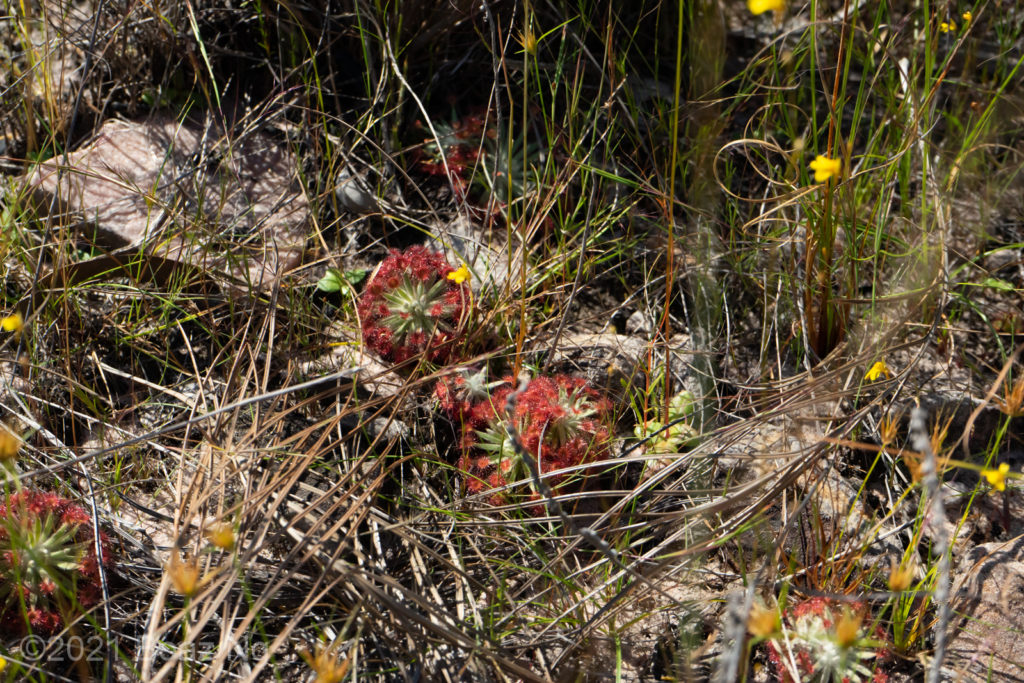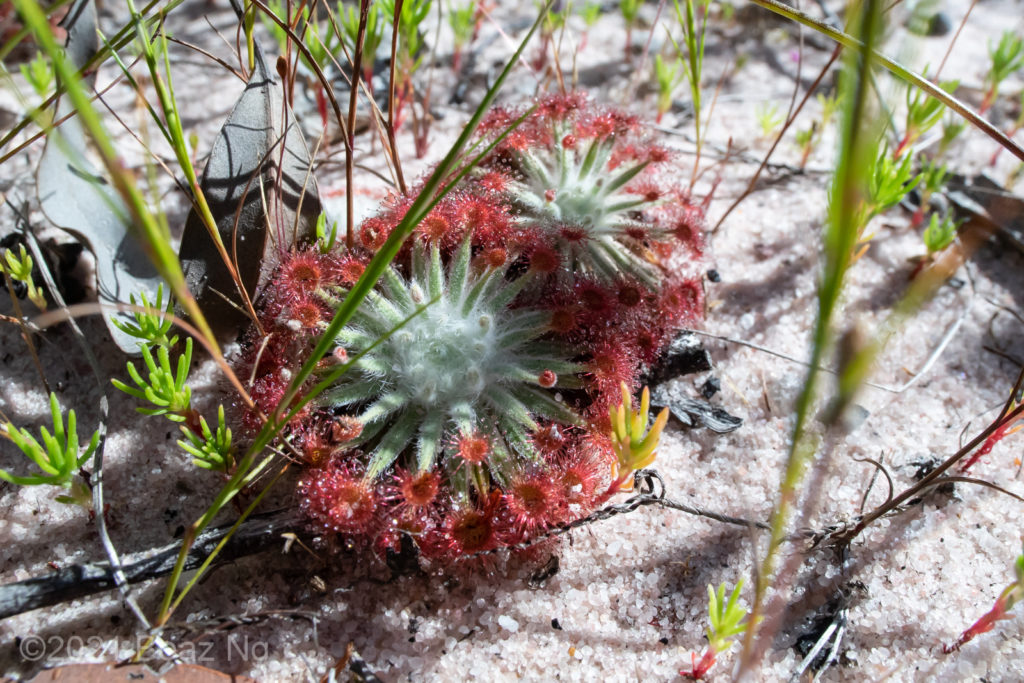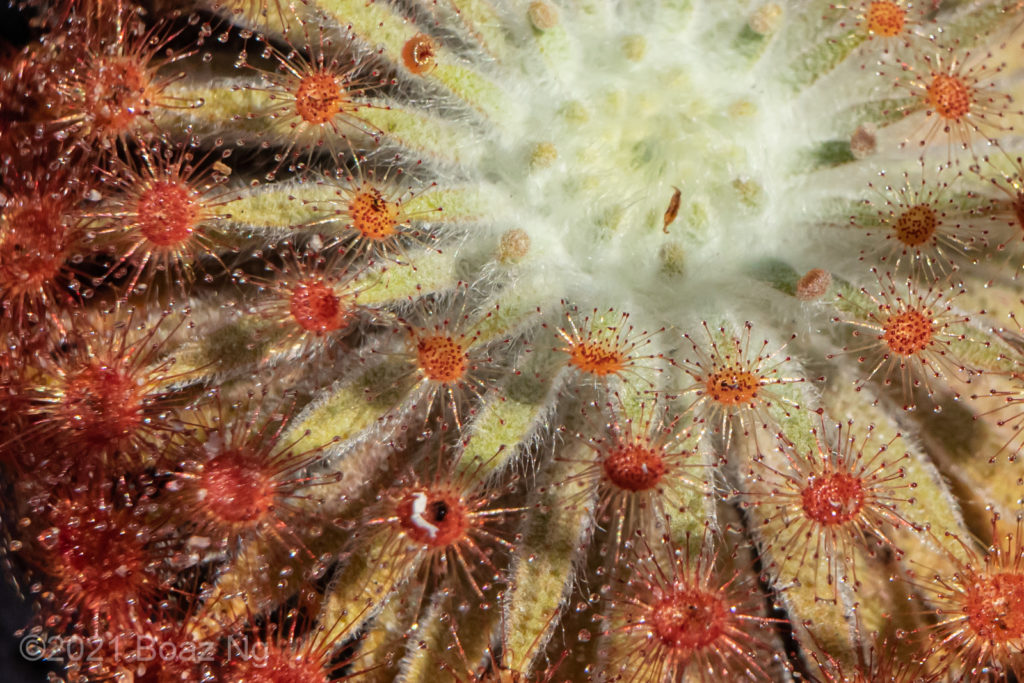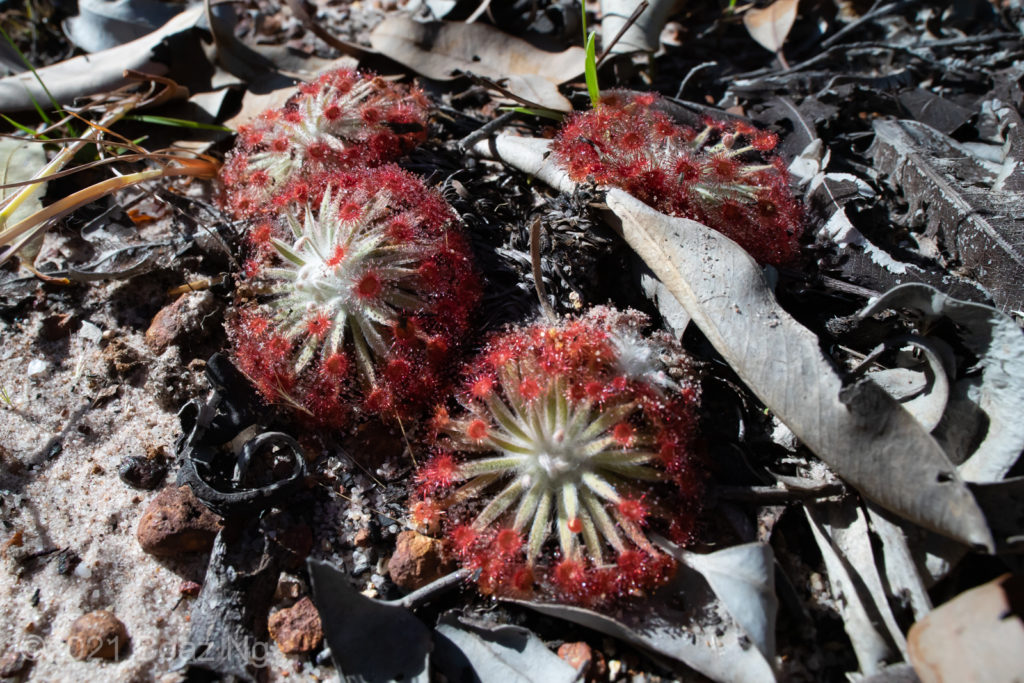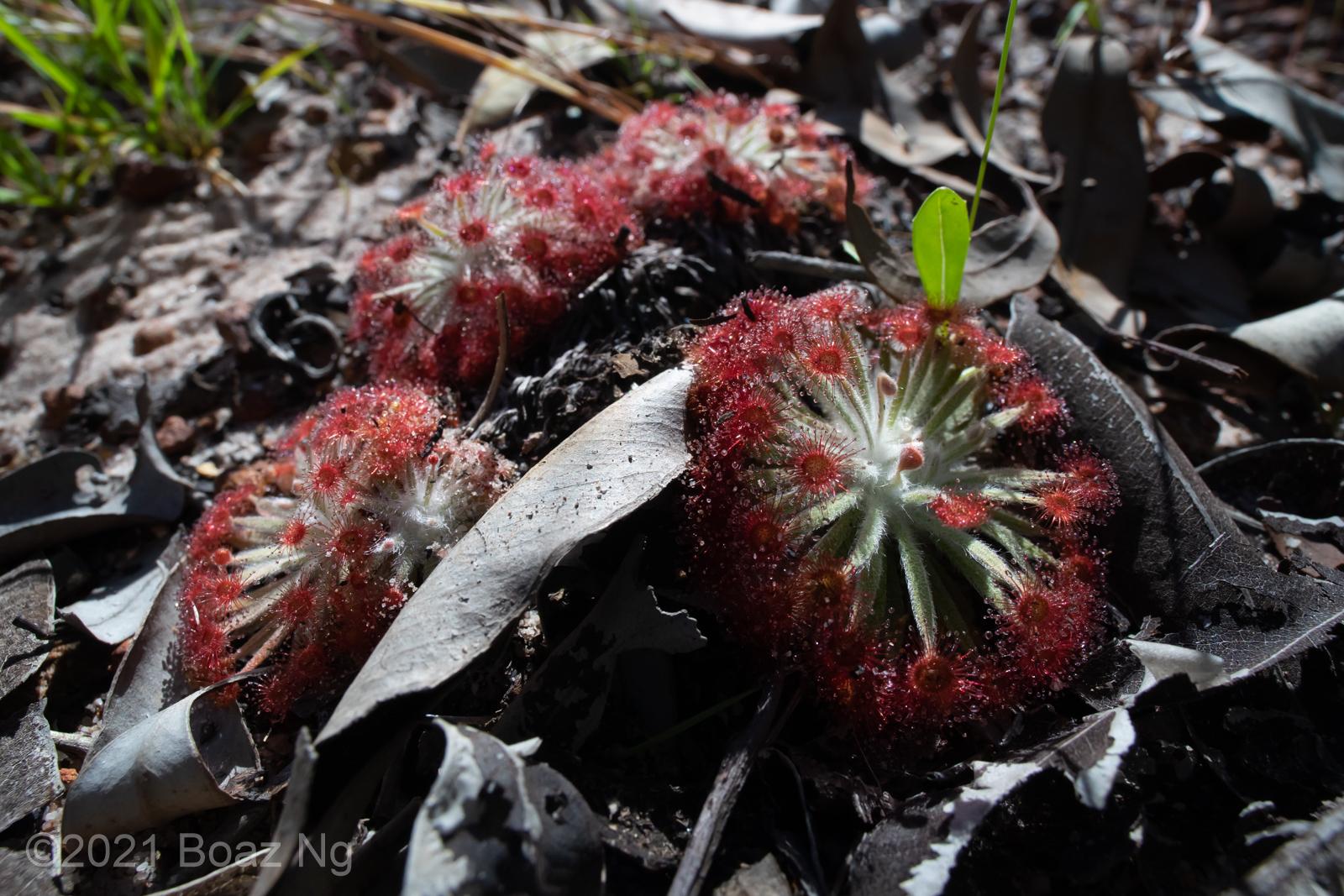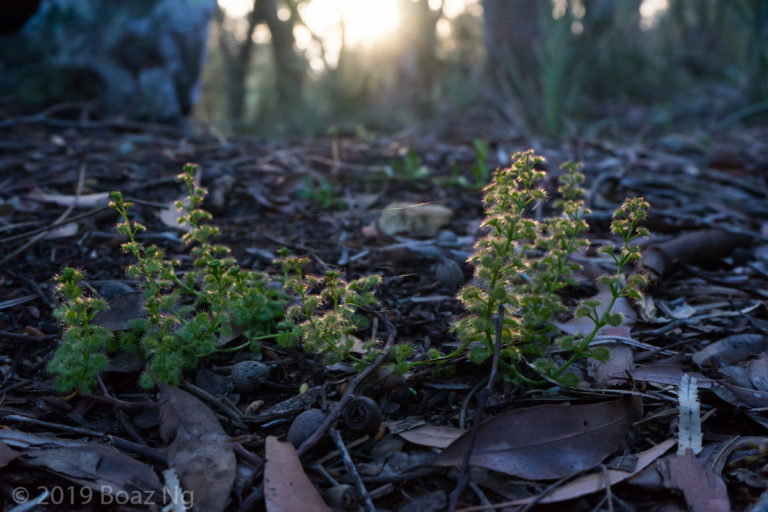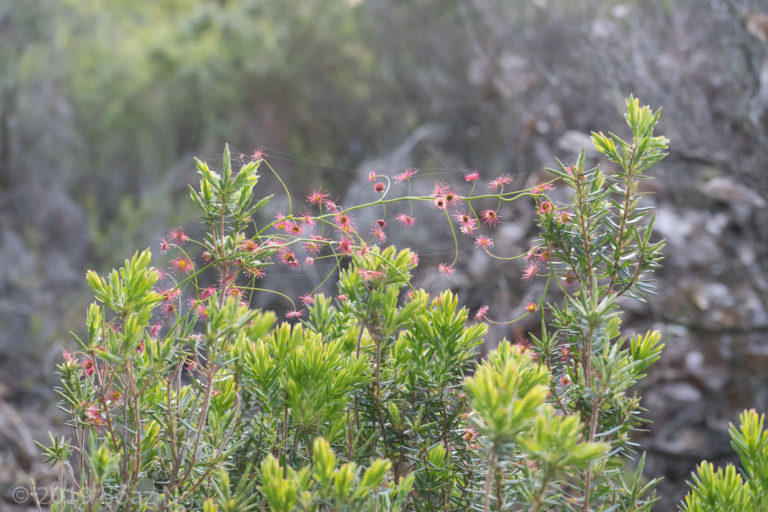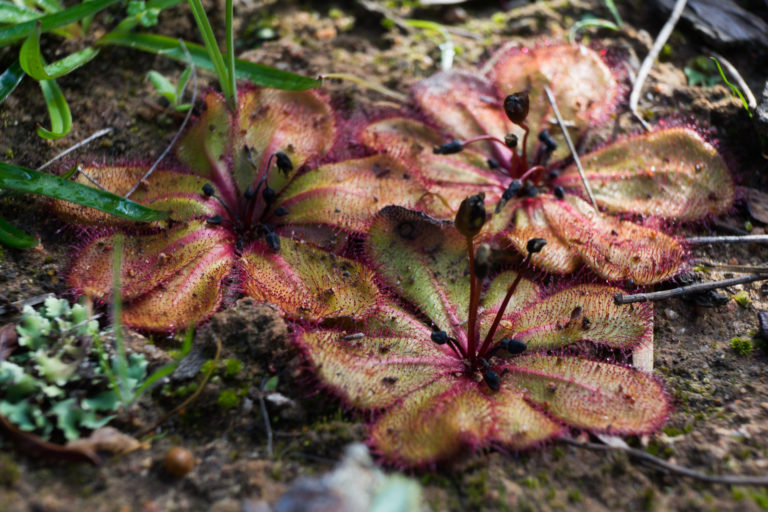In the plains surrounding the Burrungkuy outcrop grows an undescribed species in the petiolaris complex. This taxon is caulescent, forming a thick stem comprised of old growth, with a semi-raised rosette around 10 cm in diameter. The petioles are ashy green, oblanceolate in shape with a slightly raised central vein, and are covered densely with long white hairs. The laminae are red or tawny orange and orbicular in shape, albeit slightly flattened along the edge where it attaches to the petiole. The peduncle has a covering of long hairs along its length and the pedicels are pendulous in fruit. The plants occur singly or in small groups – probably due to division of the stem.
The taxon grows in the open herb fields that are elevated above the wet-season flood line (although I do not know the extent of flooding at the peak). The substrate is composed of coarse silica sand. It is sympatric with Utricularia chrysantha. It seems to be restricted to an area near flanking the Burrungkuy outcrop near Jabiru in the Kakadu National Park.
The taxon is different from the well characterised species in the area. The raised rosettes of wide leaves and pendulous pedicels share some affinity to D. fulva, however the dense hairs that cover the entire flower stem and leaves during active growth distinguish it. It also differs from all other species in the area in that a substantial stem is formed.
As far as I am aware, the species does not have a widely used provisional name. It is sometimes referred to as D. aff. fulva (due to its leaf shape), D. aff. lanata (on account of its hairy petioles) or D. sp. ‘Kakadu’ although I’m not quite convinced it’s too related to either described species and the ‘Kakadu’ epithet seems to be in use for another undescribed taxon related to D. petiolaris. For my own records, I refer to the plants as D. sp. ‘Burrungkuy’ in reference to its locality but will update it should a more official name emerge.
